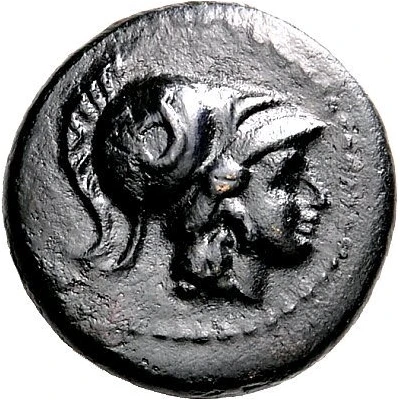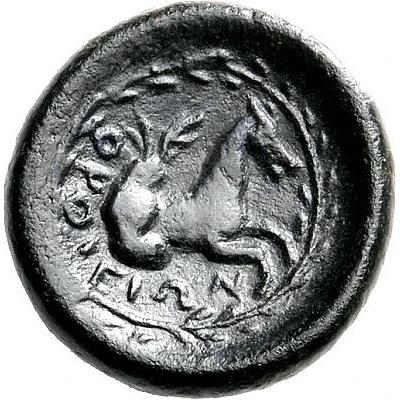


© Nomos AG
Chalkon 325 BC - 275 BC
| Bronze | 3.44 g | 15.0 mm |
| Issuer | Orthe (Thessaly) |
|---|---|
| Type | Standard circulation coin |
| Years | 325 BC - 275 BC |
| Value | Chalkon (1⁄48) |
| Currency | Drachm |
| Composition | Bronze |
| Weight | 3.44 g |
| Diameter | 15.0 mm |
| Shape | Round (irregular) |
| Technique | Hammered |
| Demonetized | Yes |
| Updated | 2024-10-10 |
| Numista | N#170872 |
|---|---|
| Rarity index | 100% |
Reverse
Forepart of a horse springing to right from a rocky outcrop, on which grows an olive tree. Around, olive wreath with ties below
Script: Greek
Lettering: ΟΡΘΙΕΙΩΝ
Interesting fact
The Chalkon coin was used in ancient Greece during the 3rd century BC and was known for its unique design. One side of the coin features the image of a horse, while the other side features the image of a chalkos, which is a type of bird. The coin was used as a form of currency in the city-state of Orthe in Thessaly, and its design was meant to symbolize the city's connection to the natural world. The use of a horse and a bird on the coin may have also been meant to represent the idea of speed and mobility, as well as the connection between the earth and the sky. Overall, the Chalkon coin is an interesting example of ancient Greek currency and its significance in the history of numismatics.